Nights of Azure is a Japanese style, Action Role-Playing, Hack and Slash game with a thoroughly enjoyable cast of characters.
Type: Single-player
Genre: RPG
Developer: KOEI TECMO GAMES CO., LTD.
Publisher: KOEI TECMO GAMES CO., LTD.
Release Date: 7 Feb, 2017


About the Game
The tale told in Nights of Azure is reminiscent of another story I have heard, but I just can’t seem to place it. The demonic forces of evil are attempting to plunge the Earth into eternal darkness and it is up to the sacrifice of a heroic Saint to stop the vile plan. After a fierce aerial battle, the Demon King is impaled by the first Saint. This gory deed sends tainted demonic blue blood raining down upon the hapless populous of a small island community which results in twisting them into fiends and demons. Now, once every ten years a new Saint must be sacrificed in order to keep the evil sealed away or the world will be plunged into endless night. The story picks up with the half-demon protagonist meeting up with the next sacrificial Saint, her friend from the past. Together, along with a bratty stray black cat, they head to the hotel which will serve as their base of operations. This is where they will stay on this mysterious uncharted island where there really could be a monster in the closet at night.
Nights of Azure Preview Video
Quibble about the Default Controls
The first thing I have to say about this game is something I usually leave until the end, but this time I figure it’s best to get it out of the way right off the bat. I always play a game I plan on writing about with its default controls as that way I am able to experience the game as it was intended and comment towards that. You can’t rightly say a game has refined controls if you yourself spent a lot of time setting them up precisely how you wanted them. Likewise, you can’t say the controls are bad if you adjusted them away from the intended layout in a way that made it difficult to control (such as maybe setting movement controls to the right-hand action buttons and using the thumb stick to control your actions instead). That would just be preposterous… and something maybe I will try next time. With that said, the default gamepad controls for this game are questionable. I was stuck on the start screen for at least a minute trying to figure out if my gamepad wasn’t being detected properly because when it told me to press Start nothing happened. This was when I actually pressed the traditionally centrally located and actually labeled Start button. I even tried the less common but sometimes used actions A and X buttons but it turns out the Start button the game was looking for was the action B button. I suppose if you had never played a similar game or if this was your first time playing a game in general that these controls could work. It might also be the most optimal configuration of buttons in the history of button configurations, but to me, they were just downright wacky. Luckily the configuration screen lets you rebind the controls. Unfortunately, it doesn’t exactly tell you what buttons you are binding to what controls. It just shows an image of the individual gamepad buttons of an XBox One pad and then tells you to select a button number for it. Setting the X button on the pad to Button 1 in the menu doesn’t exactly tell me what it is that I am binding that button to do. Is Button 1 Attack? Jump? Direction pad up? Pause? No idea! Fortunately, the developer likely realized that their labeling scheme might be a bit confusing so they actually let you configure the buttons by just clicking on the one you are trying to set then binding it to the corresponding button you pressed on your gamepad itself. Sure, you still don’t know what it is you are binding it to do, but at least you know whatever the game takes to be the X button command is actually bound to your X button rather than say Left Trigger. Once I rebound the controls in this manner, the game played smoothly and worked quite well with the gamepad. Now it is entirely possible that if I had been using an XBox One gamepad, as the individual buttons depicted in game suggested it was designed for, maybe the button binds might have auto-set in a traditionally laid out fashion rather than the seemingly random way they bound for my old XBox 360 pad. Either way, it was a really simple fix and isn’t something that detracts from the gameplay of the game once it is sorted.
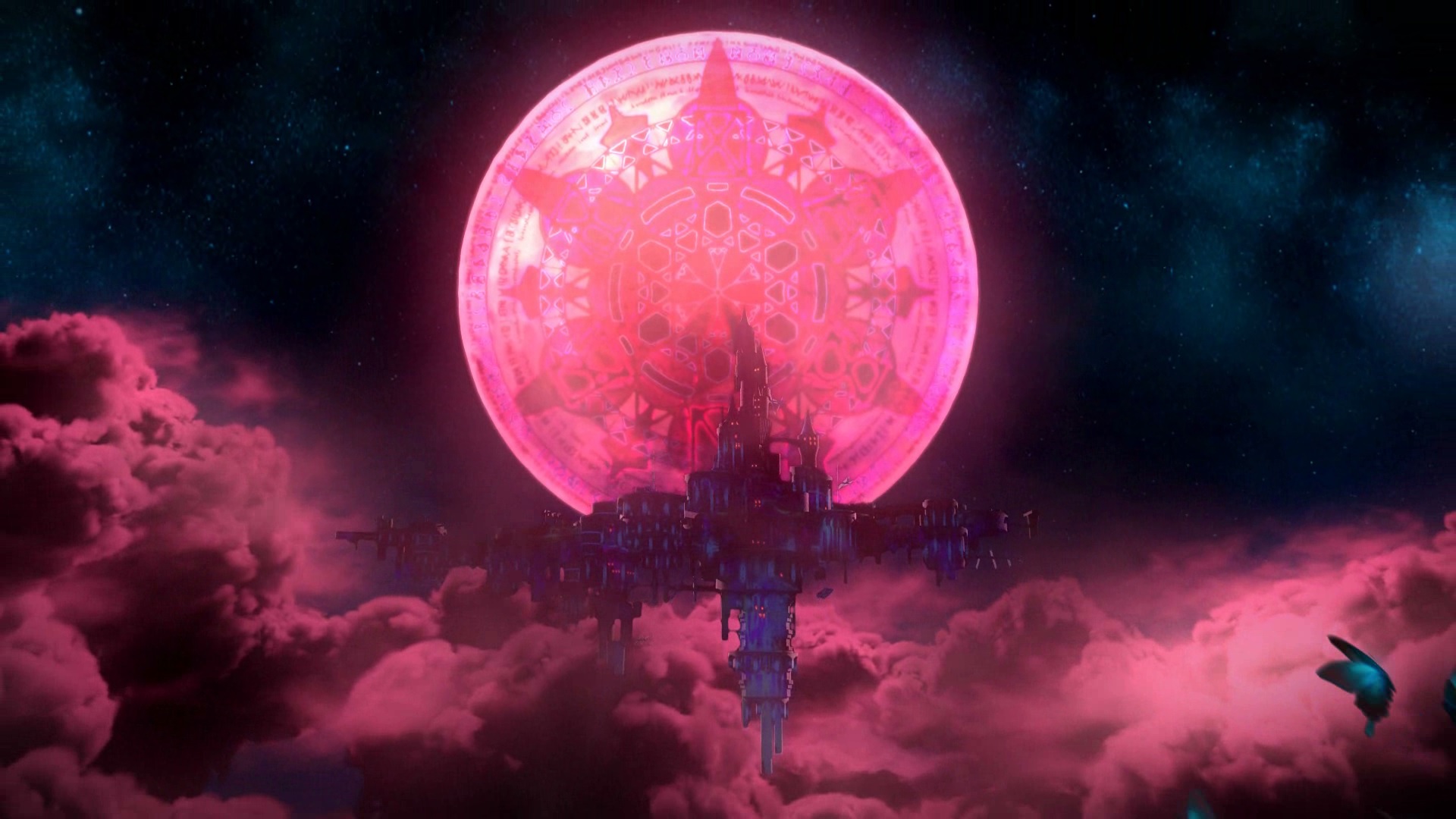
Overview of the Game
With that out of the way, let’s get down to it. As mentioned, Nights of Azure is a Japanese style Action Role Playing Hack and Slasher. This basically means the game will spend a fair amount of time with just dialogue scenes that are for the most part non-interactive story telling. Occasionally it will ask you to make a decision, but other than that it is just you reading along with the story (unless you understand Japanese), in which case the game is fully voiced and actors will speak most of the dialogue for you. When the game isn’t telling its story to you, you will find yourself for the most part, able to choose to do whatever it is you feel like doing. There is the main story quest that you can progress mostly at your own pace as well as random quests you can take on for extra rewards. There is also a skill-testing battle arena available where you can take on challenges in order to earn rewards based on how well you do with the challenge. One feature that is actually kind of unique is that there are things to do in-game that don’t exactly involve dealing with murderous monsters. First off, if you are tired of finding the same old items everywhere and encountering shops that never seem to change their wares, you can send off a merchant ship to explore different parts of the world and bring you back treasures from their visited lands. Secondly, ever wonder what your characters do when you are not sending them off into battle? Well, now you can plan out their idle time activities! Depending on which Day Quests you do and what activities you told them to engage in previously, you will unlock additional activities for them to perform. By performing these actions you will earn spendable trait points that are used to unlock new perks in-game such as extending the time you can be in demon form or adding additional decks for your creatures. Let’s talk about those now.
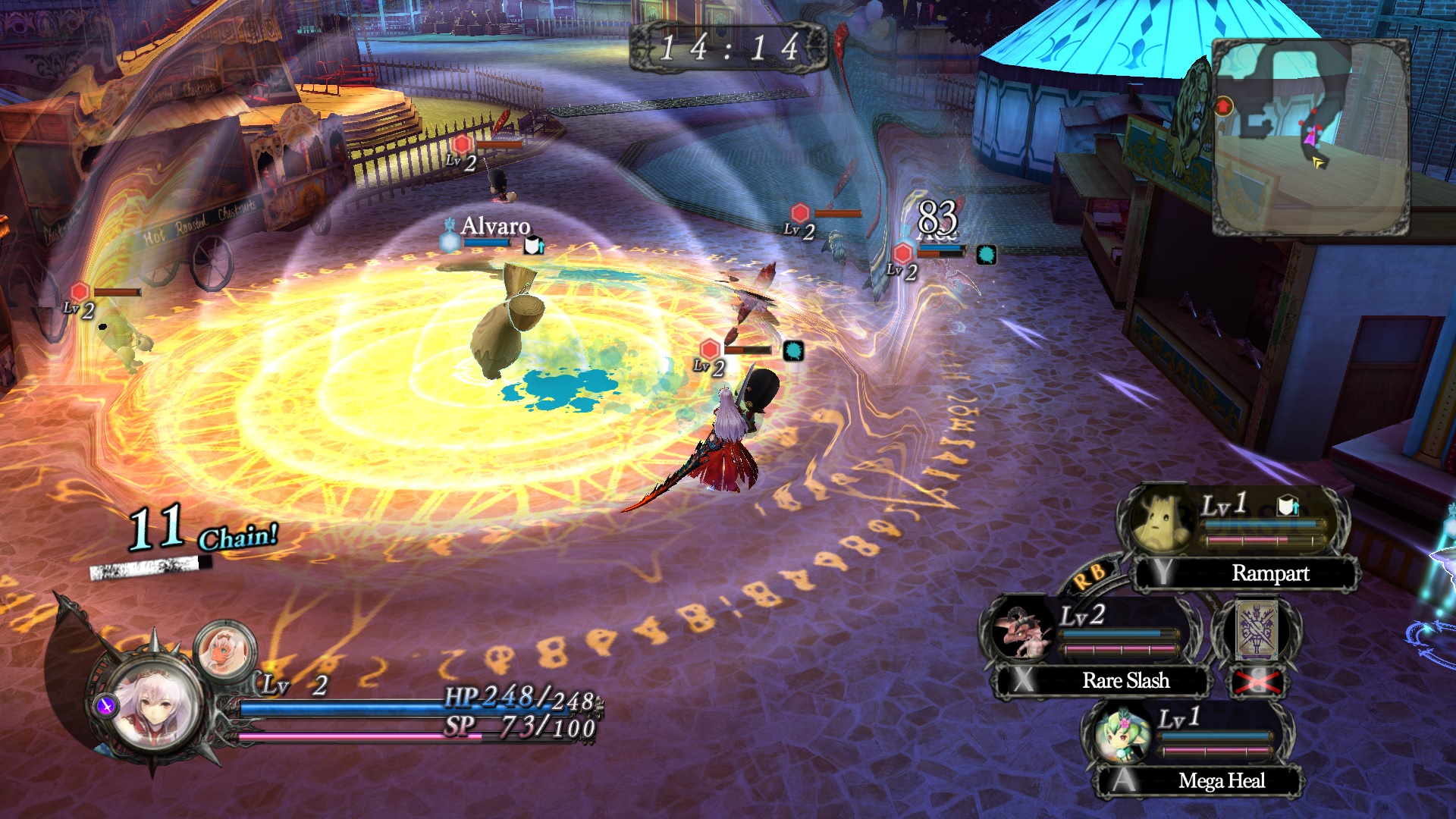
Combat
The actual gameplay in Nights of Azure pits you, a half human/half-demoness, against hordes of monsters. You have a few genre standard moves available to you and there are also some combo chains you can perform. They are not overly complicated to pull off either, so that is always nice. You have your nice quick and spammy basic attack that will get you by most of the time. It even takes advantage of the fact that it is spammy by having a combo that is triggered just by spamming it four times in a row! There is your heavier attack that tends to have more of an impact but is slower than your normal attack. Lastly, there is the magical attack that has a nice animation effect before it unleashes its fury on the enemy. You also can perform rolls, dodges and blocking to help keep yourself alive, but Arnice is a pretty tough protagonist. I actually found it more fun to just throw caution to the wind and simply go all out in my fighting rather than worrying about blocking incoming attacks. If you happen to get wiped out in battle you are just sent back to the Hotel early without any penalty. Despite being a force to be reckoned with, Arnice is not alone in her fight. To aid you in your battle you can have up to four contracted demons known as Servan fighting alongside you. Depending on the type of Servan you have out, depends on how they help you. Some are focused on trying to keep you alive by fighting your enemies with you: by soaking up damage for you or ruthlessly attacking the enemy in order to kill it. Others are concerned about keeping you alive by healing you or casting helpful spells on you. Which ones you have out at a time is up to you. You can set up to four teams and simply call out the team most appropriate for the situation. Your standard little mix of everything for your standard adventuring, your heavy healers and defensive ones to help you against a tricky boss, or maybe your all out assault team to help you clear your way through an area quickly. You are free to call and dismiss them as much as you want without much penalty other than costing you some SP that regenerates fairly quickly over time anyway. There is another interesting twist the game throws at you based on what kind of team you have in play and that is your demon form I mentioned before. As you battle your way through the enemies, collecting their blood for your personal use later, you will eventually charge up your demon transformation gauge. Once you activate it, you will go full demon on your enemies for a short time. Here is the thing, depending on what kind of dominance your team of Servan has, affects what demon form you will take. The fire manipulating, damage dealing Demon is the default if you fail to have at least 10 transformation points for one of the other forms. The Rabbit is a speed demon who is great at melee combat. Phantom form lets you be a great magical sharpshooter. Armor form makes you very tank-like and there is another form which I won’t spoil for you that you can encounter later. Your team isn’t the only way you can have yourself customized either, you actually have several weapon types to freely choose between after you unlock them over the course of the game. I rather enjoyed the ability to quickly switch weapons on the fly, particularly against the nasty explosive monsters.
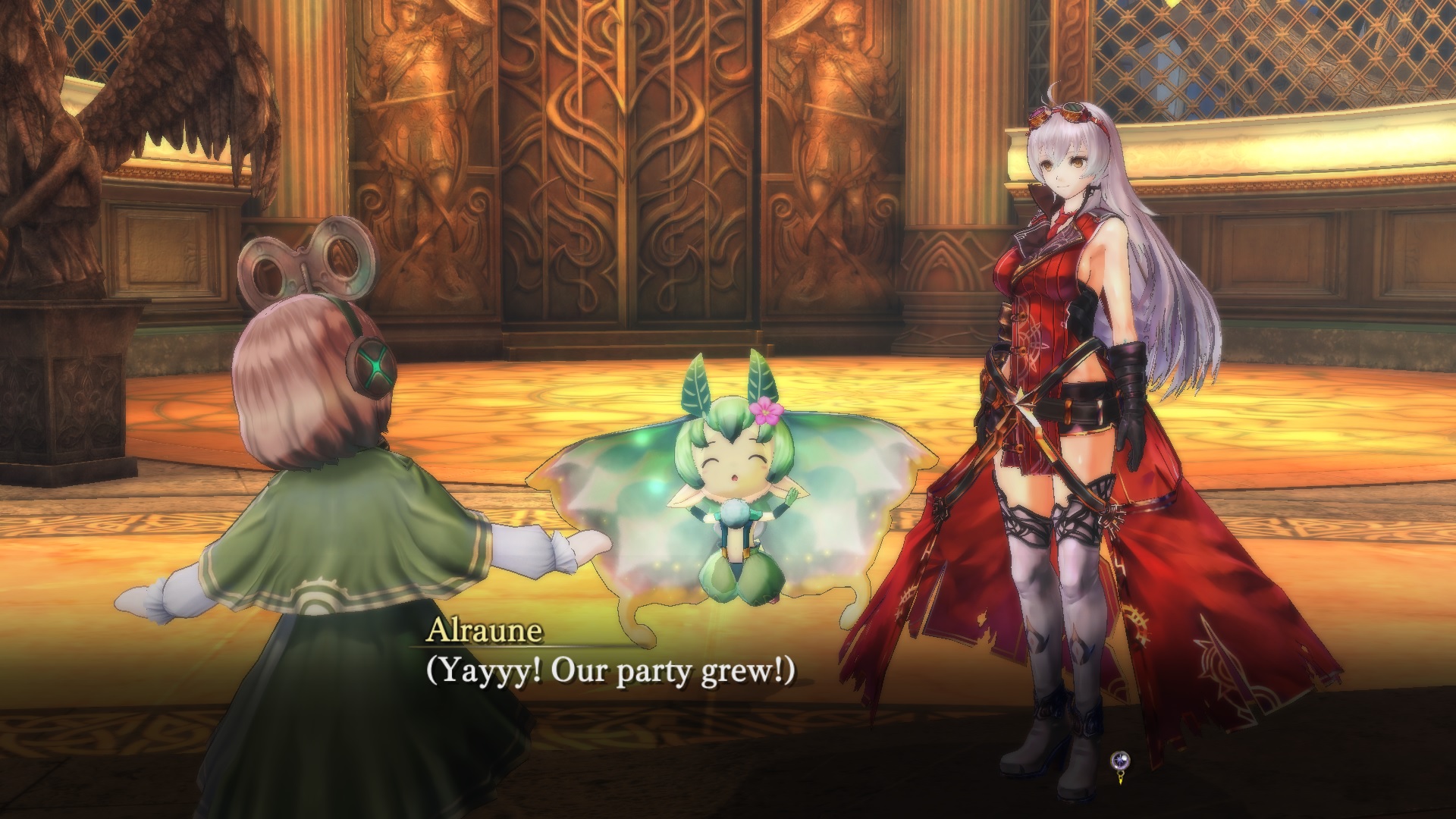
Gameplay Elements
The game is broken down into an island map with a fair amount of locations to visit. Each location is linked to at least one other location, meaning you have to explore the previous region until you find an exit to the next region. To prevent you from rushing through all the areas, there are typically gates preventing your passage until you have progressed through the story enough to warrant going there. You will likely revisit each area plenty as the optional random quests will often send you to one of your previously unlocked areas to look for something specific there. Each area where you are sent looks significantly different than the previous areas of the game so having to revisit them really isn’t that big of a deal. Similar to how the game prevents you from moving on to new zones before it is time, sometimes the levels themselves have temporary barriers that will pop into existence trapping you in an area until the ambush is taken care of. These barriers come in several different forms so that they can better match the theme of zone you are in. There are also traps in some levels to hinder your progress a little, such as tiles that have spikes that raise and lower or flames shooting up out of the tile. As you progress, the levels become larger and will take you longer to explore. As you explore around, you will discover new sublevels to explore as well as the occasional hotel doorway that acts as a fast travel system for you to return to the area with. To encourage you to explore there are plenty of chests scattered around that contain items, money, blood (eww?), or HP/SP restorative bottles. Each time you revisit the level the chests respawn for the most part so you are still rewarded even for revisiting an area. However, don’t spend all your time exploring, because you do have a time limit of how long you can be outside of the hotel for. The premise is that the monsters you are fighting only appear at night, so when the sun rises, they vanish. You have a 15-minute timer to explore as much as you can before you are automatically whisked away back to the hotel. You can expand your exploration time by purchasing that option with your trait points earned from your level ups and day time activities. Optionally you can return to the hotel anytime you want by selecting that option in the menu or by visiting one of the magic hotel doors. So long as you spent enough time outside of the hotel, your day time activities mentioned earlier will be credited and completed even if you forced yourself to return early.
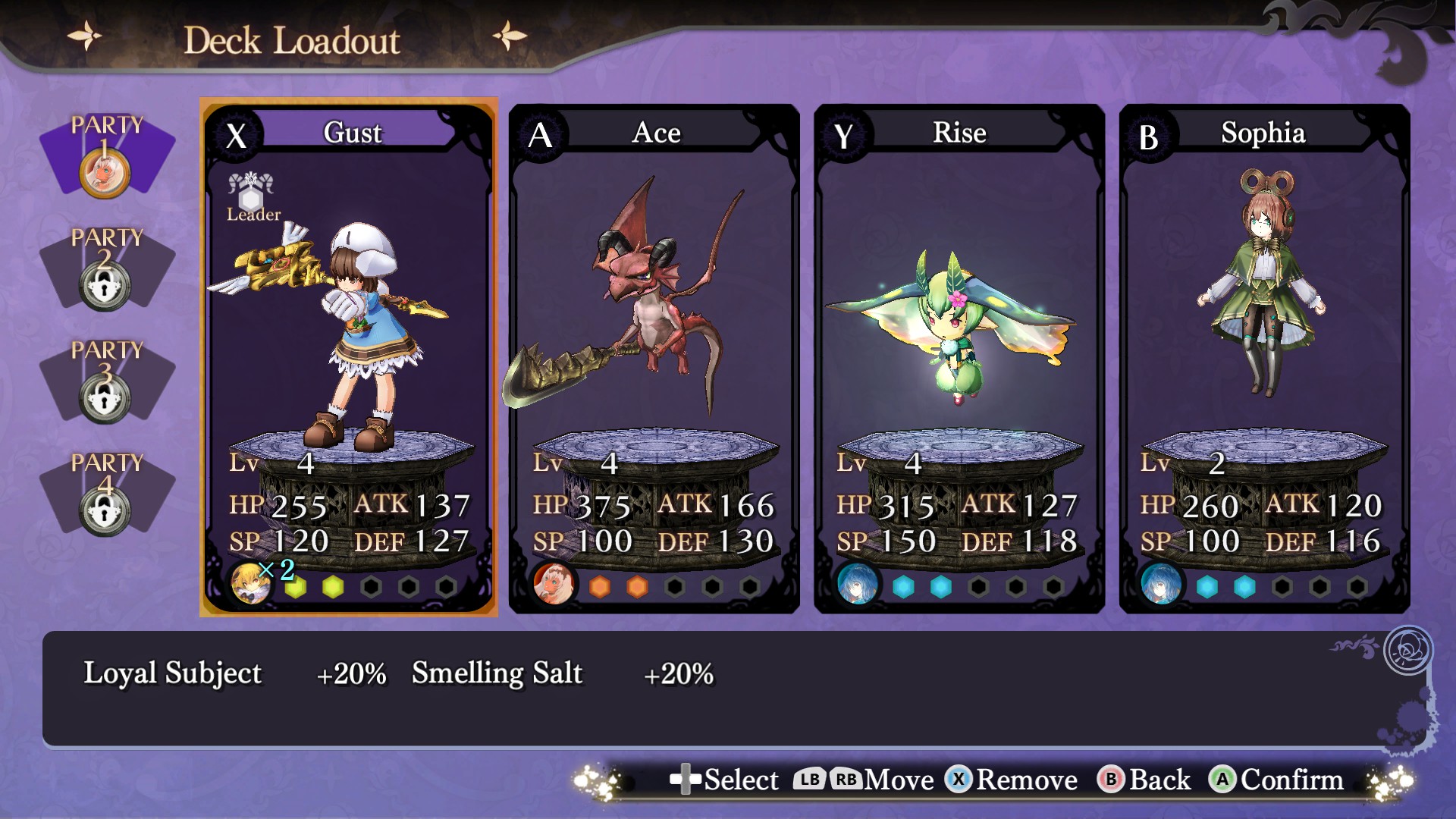
Let’s talk about blood! It’s a big deal in this game so it deserves some mention here. As you read earlier, demons have blue blood and it is that blood that contaminated the island and transformed innocent people, animals and apparently objects into creatures of the night. You can collect the spilled demon blood as a spoil of your battles against them. How much blood you get isn’t determined by the size of the monster per say, although bosses are pretty big and pretty bloody, it is determined by how much of a killing spree you are on. The higher your attack chain gets, the more bonus blood you get. Your Servans attacks help contribute to this chain score, so it is a wise idea to have them out and to have at least one long ranger available to help attack the next batch of enemies sooner in order to maintain the chain. If you go too long without attacking anything it resets back to zero, so it’s best not to rest too long after wiping out a group of enemies. Why do you want blood? Well your character kind of thirsts for it as she is a half-demon and all. While that saintly friend of hers may occasionally look very tasty, she refrains from taking the blood of humans. Instead of satiating her cravings, she uses the blood to purchase things from other demons and also uses it as a blood offering in order to increase her level. I’m sure it would be entirely reasonably possible to go through most of the game at a low level thanks to how the level up system works, but that would take away the fun and be just plain silly as you unlock your new skills and weapons that way. Your Servan gain levels as well through the use of a traditional experience system. If they are equipped to one of your decks, even if they are not used in a battle, they will gain experience points. The higher they get, the better they get. They can even unlock passive traits that increase their entire team rather than just themselves. Every other level up or so the game gives you a choice of two possible upgrades for them, the one you choose gets applied, the one you don’t will get ignored. You can also boost the Servans further by using certain items on them which will permanently modify their stats a limited number of times. You just need to be a little strategic when you are planning your teams and their upgrades.
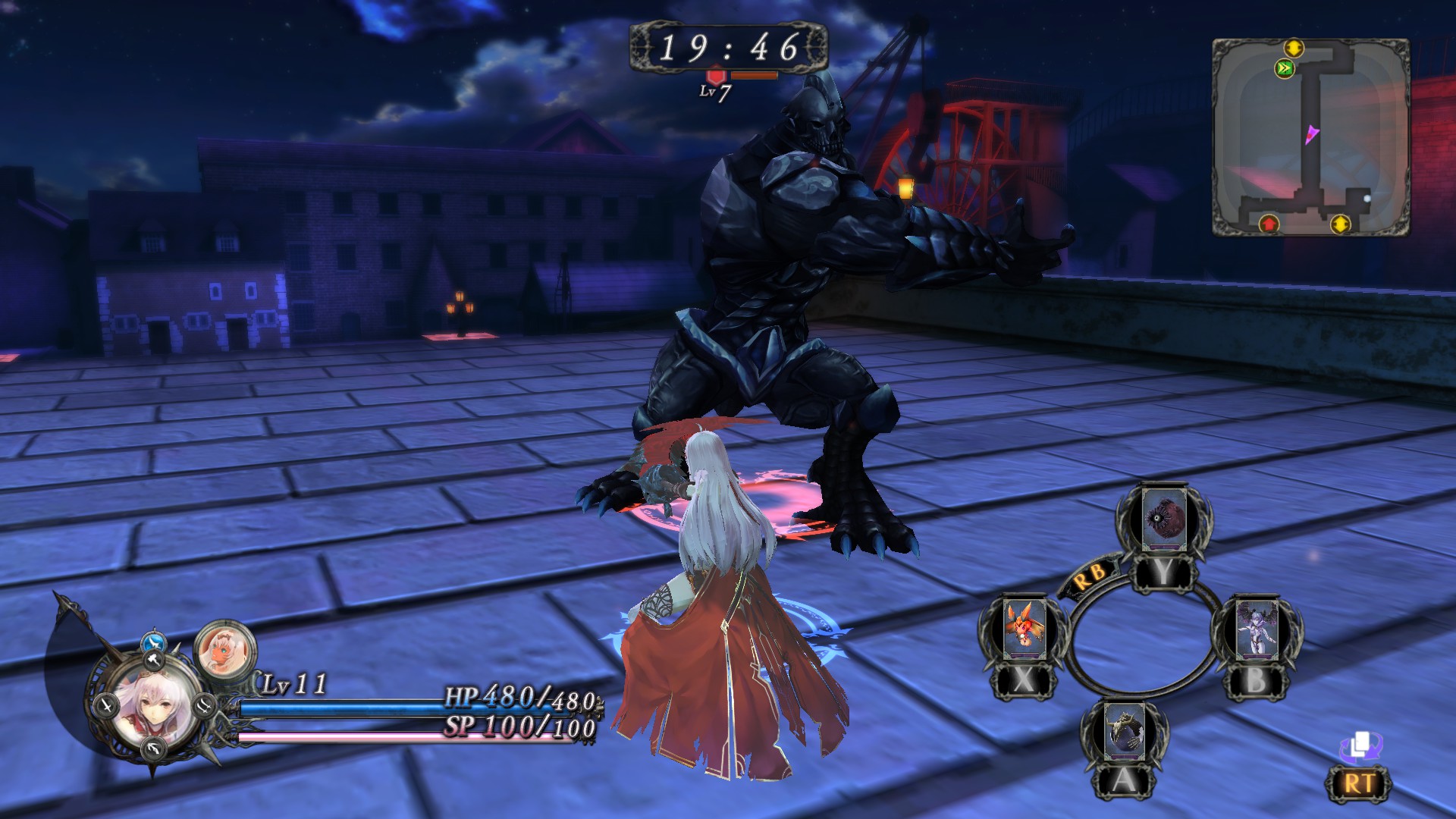
Equipment in this game is interesting. It can be equipped to the heroine of the game and even the Servan serving her. Equipment generally boosts a few stats for the wearer but sometimes adds new passive abilities as well. For example, equipping a vampire bat allows for more blood to be collected per kill. Wearing a bell makes the heroine jingle as she walks. Each piece of equipment has its default main passive ability that is gained by equipping it. The other stats it impacts are usually quite random meaning that it is entirely possible to have 10 of one item and none of them being identical. You are able to carry 250 items at a time and fortunately, unlike most games, this game is a little kinder to you if you go over that limit. I have played a certain open world western RPG game where I always felt compelled to pick up anything that wasn’t nailed down just so I can sell it to earn a little pocket money. Hitting my inventory limit and then finding one more item that I absolutely must have and having to face the difficult decision of what incredibly low value items do I want to throw away so that I can pick up this slightly higher value one … admit it, we have all done that! Well in this game when you get overloaded, the game simply makes you sell some of the items you collected while you went out adventuring that day, and lets you keep whatever is left. That way you can be a packrat, collecting it all, without the need to drop anything or lose valuable pocket change!
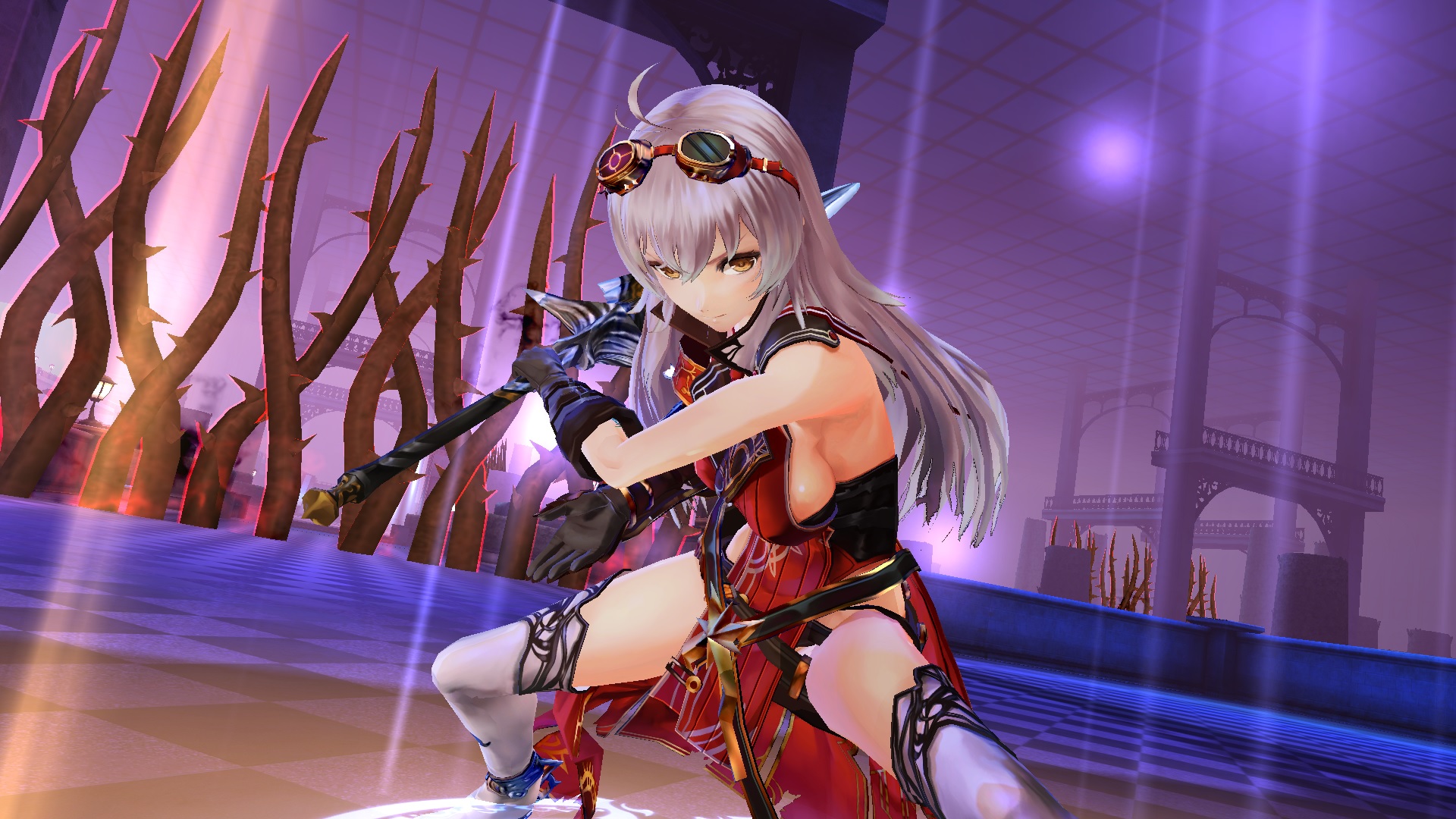
Graphics and Sound
By now you should have the gist of what the gameplay is like in this game, so let’s talk about the visuals. Everything in this game is in 3D other than the world map and the transition screens between chapters. The character models all contain a very high level of detail with many subtle little bits of flare which truly enhance the visual appeal. Unlike similar games of this genre I played, it doesn’t solely rely on fan service to make people interested in the game. Some of the character models, specifically the heroine and her friend are a little fan servicey, but for the most part it is tastefully done. The main character’s default outfit does give her a bit of demonic flair with just a hint of fan service, whereas her dreamland outfit is a bit purer fan service. The enemies in this game come in all different shapes and sizes, and while some are just recolors of other enemies, they are modified with their own skill sets for the most part. The levels themselves have plenty of detail to keep the visuals enjoyable. The old mansion’s gardens are green and a little spooky. The carnival looks fun and whimsical. The graveyard looks like some type of pyramid style tomb. The opera hall looks very ritzy and classy. The city looks… city-like! Plenty of accents were added to each level to make them feel more alive. Even the breakable objects get matched to their surroundings. Candelabras can be smashed in the classier places, grass can be cut outdoors, vases and boxes abound. There are plenty of effects to help make each place interesting to visit.
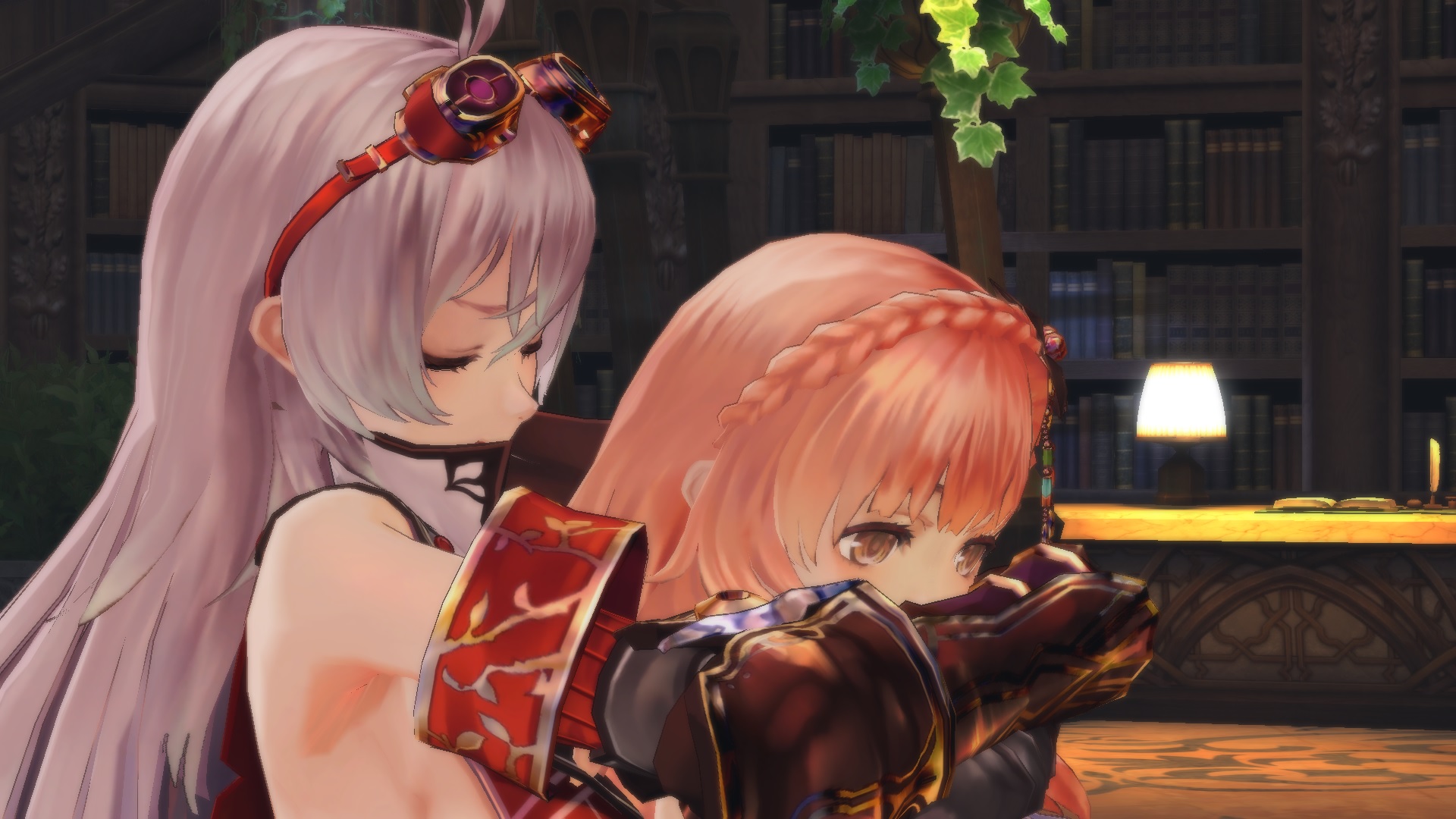
The sound in this game is atmospheric enough to help keep you in the mood of whichever area you are in. For example, in Dreamland a lovely song is sung while you visit there. Shame it is in Japanese, I’d love to know what she is saying! Actually, all of the vocals are in Japanese, there is no English or any other language dub for it. That actually surprised me when I first started playing because the last game I played by this Developer was Atelier Sophie and it was pretty much fully English dubbed where it counted. Since this game was available in a bundle with Atelier Sophie I sort of assumed it was in English as well, however, having solely Japanese spoken language in a game has never really bothered me before and it still didn’t bother me this time. Even with the language barrier, the voice acting in this game was very well done. You could easily tell by their quick changes of tone which emotion they were currently conveying, be it anger, frustration, shock, joy or something in between. Each of your Servans makes some kind of sound before the speech box tells you what they are trying to say and it helps make them seem a little more alive, although they do tend to repeat themselves a lot. Talking about talking, let’s talk about that a little more! When in the nicely detailed hotel, scattered around you will find the Servans you currently have as well as the main NPCs of the game. Each of them has a few things they want to say to you, but sometimes they actually have something different to say. The game thankfully puts a marker over their head so you know they are not doing the typical NPC thing at the moment where they repeat the same thing ad nauseum.
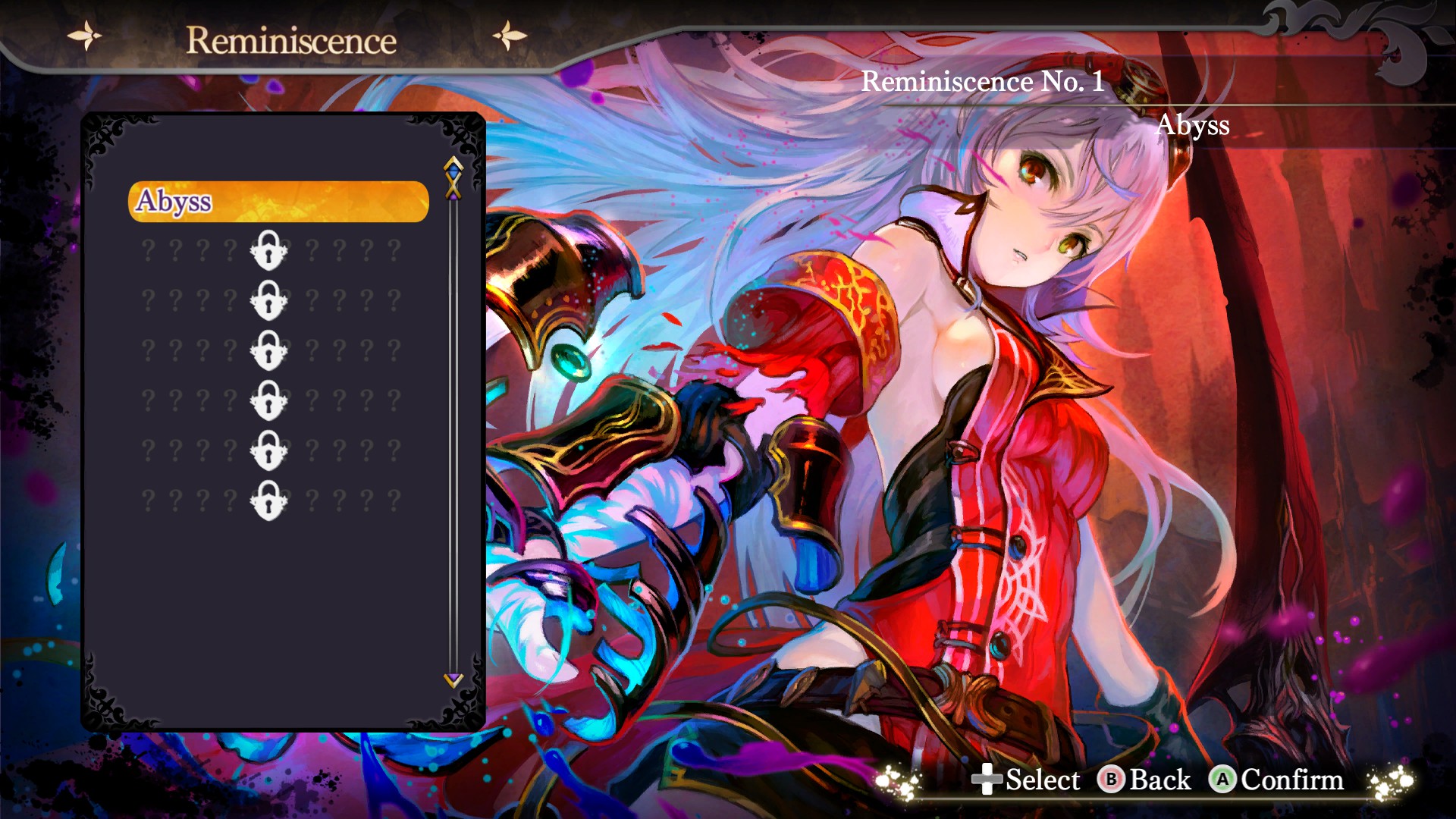
Closing Thoughts
There are still plenty of things I could talk about for this game, because there are so many little things going on to help keep the game interesting. Between chapters, all the NPCs receive new dialogues and there are a few cutscenes that play through which are there to help advance the plot. There is a basic quest that pops up pretty much every time where someone lost something and you need to help them find it. There is the cupcake subplot that updates each time the chapter changes. The mysterious black butterfly letters from the guide. The changing moon phases to show how close evil is to enclosing the world in eternal night. The random notes left for you at the hotel counter. The fetch quests given to you by the NPCs. The encounters with the NPCs in the field such as the Professor documenting the creatures. I could go on, but I will keep it short and just say there are plenty of things to keep your interest in the game. Sure, some of them repeat a little bit too much, such as Lilysse losing an item and it invariably being found in your shared room (at least to start), but that is mostly because, despite the size of the hotel, there are only a handful of areas you can visit within it. Even the NPCs have fun interactions with each other although they repeat a bit, it’s all in good fun. I particularly enjoy that the Professor and the Thief/Merchant don’t get along, constantly bickering and accusing each other of things. They are both very expressive characters. Rather than spend more time talking about the finer details, I will leave that to you to discover on your own.
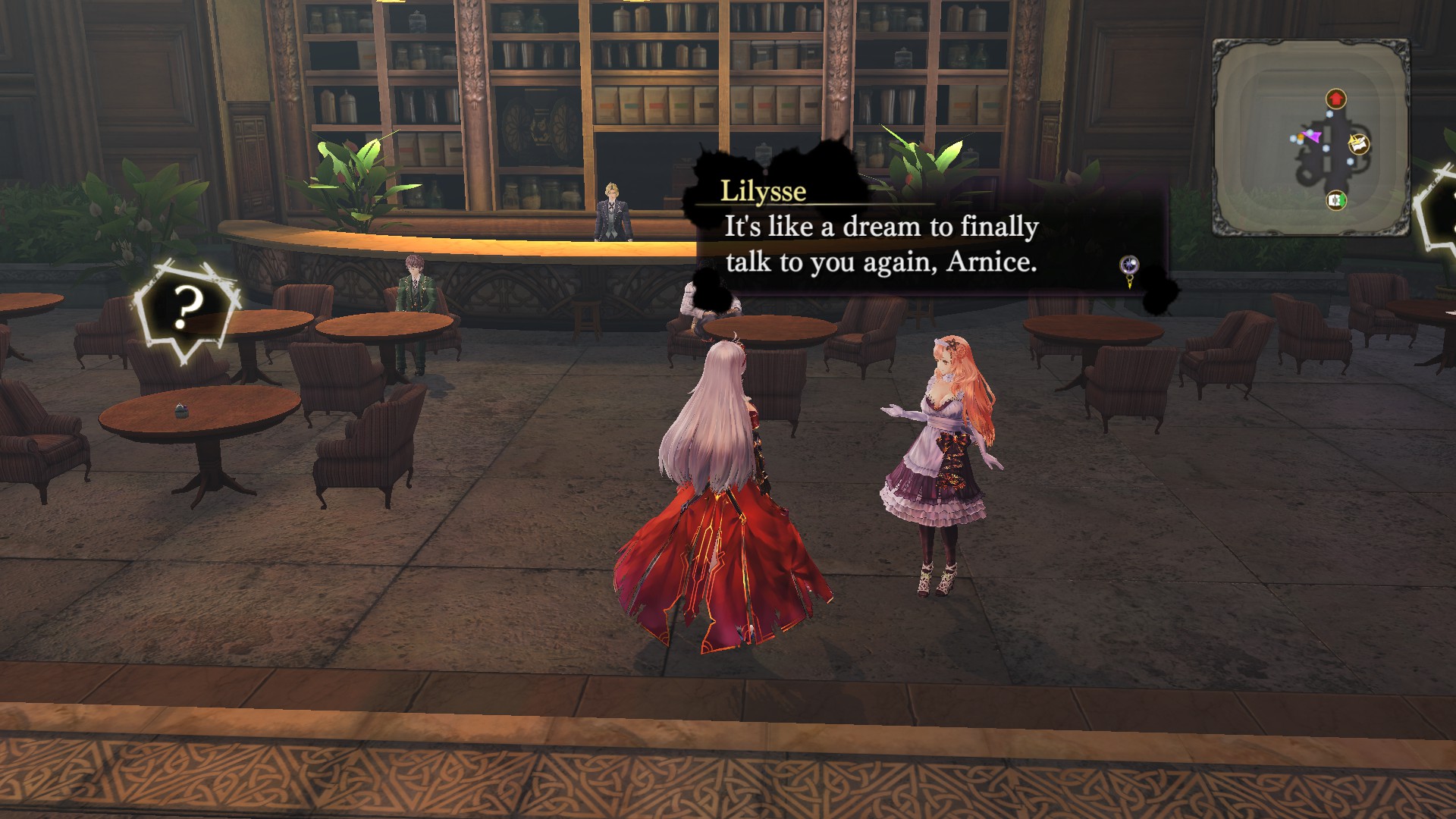
Should you buy Nights of Azure?
If you enjoy games with a fairly rich plot that spends a fair amount of time on exposition such as the Atelier series, then you should enjoy this game’s story telling style. The combat in this game is actually very well done considering what these sorts of games are often like. It’s actually quite enjoyable to head out into the field and do battle with the monsters lurking around and, as of the time of writing this, I am still not bored of that. It doesn’t feel like I am just grinding away at enemies in the game’s feeble attempt to delay progressing the story a few moments, it actually feels sort of like it is a necessary evil as I press onwards towards my next goal. The game does often send you back to areas you have been before, even if you are considerably too strong for that area, but it’s mostly optional. If you really don’t feel like going back there yet again, you could always just not take that optional visitation quest. If it is an NPC sending you there for the story, you could, for the most part, just run to the destination marker and warp back out of there while only fighting the battles it forces upon you. So far, I have not felt overly compelled to do that as the item drops from the enemies can still be quite useful. The characters in this game are all very enjoyable with none of them being particularly annoying. I enjoy the interactions between the characters enough that I am always happy to see the mark above their heads indicating they have something new to say. The game’s visual style is quite appealing and while it only has spoken Japanese, the game has enough charm to let me easily ignore that I can’t understand what they are saying. Overall, this game is definitely one I am going to Save!










